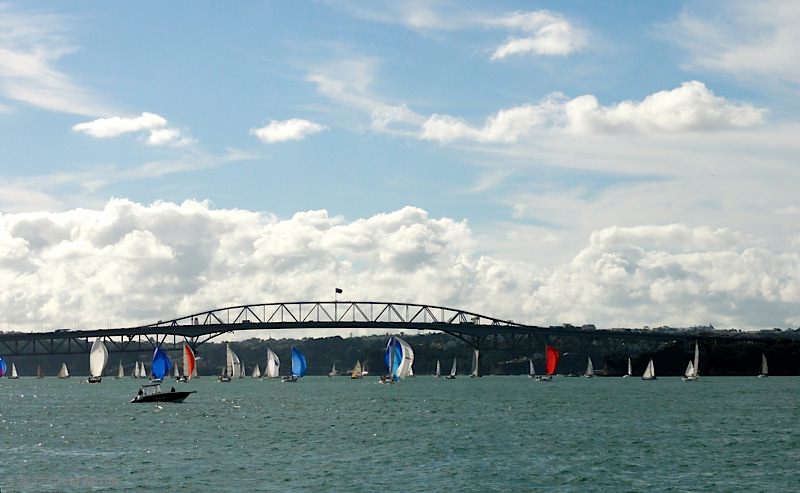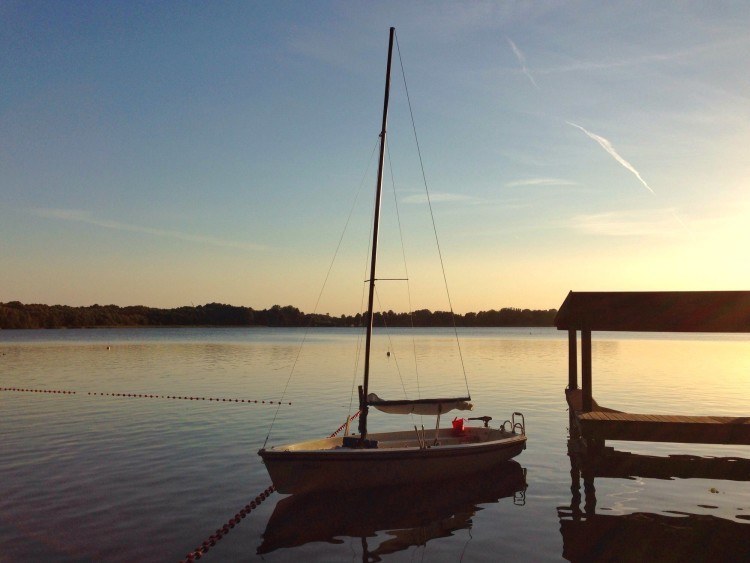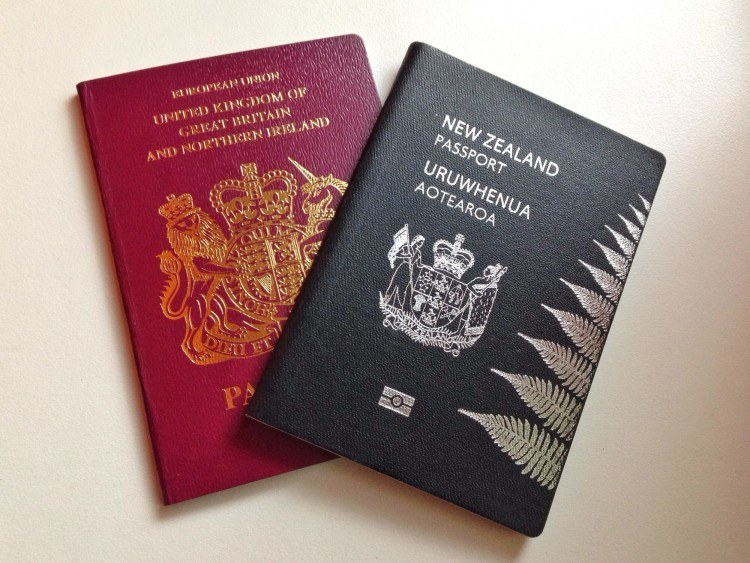Sponsored Listings:
Packing just might be the most important part of traveling. How much stuff do I need, and what exactly should I bring? I always ask myself that question before embarking on a fresh route — each destination is different, and the mode of traveling is also a decisive factor.
I brought nothing but flip flops and sunny-day clothes. I even tried to bring a huge beach ball! I thought I knew what I was doing, but I didn’t. Don’t make the same mistake I made — learn how to pack well for a sailing trip!
The basics of sailing
Now, before I get into the details of how to pack for a sailing trip, I’d like to point out – speaking as someone who went unprepared on his first sailing trip – you have to prepare yourself. Learn the basics of sailing – do some research on Google, at least, but if you can, take a basic sailing course. You’ll become familiar with nautical terminology, navigation, and you’ll definitely learn how to pack correctly.

Luggage
What to bring depends on many variables that include whether the trip will span a portion of one day, extend to an overnight stay, last a few days or an entire week. Planned stops at one or more marinas gives you the option of replacing essentials or personal items if needed.
If remaining on the water for the entire journey, ensure that you have everything you might need. But, unless the adventure involves a multi-million dollar yacht, the sleeping quarters and storage options are limited in space — so everything you might need should fit in a portable backpack or a duffel bag.

Apparel
The atmosphere on sailing excursions is typically casual and relaxed. Lounging below or above deck requires nothing more than weather-appropriate attire. For a week’s trip, the list might include three or four pairs of shorts or slacks, up to seven blouses or T-shirts, and two or more pieces of swimwear. Pack enough changes of underwear for each day of the trip, and remember something to be worn as a cover-up when coming out of the water.
When the wind blows and the sun goes down, the temperature on the water is often much cooler. Take a light jacket, sweatshirt or a sweater. Footwear should include a pair of rubber-soled, non-marking flip-flops, sandals or simple tennis shoes.
If planning to enjoy an evening out on shore, take at least one outfit appropriate for the location or activity. Beach towels are necessary for lounging on the beach or for drying off after bathing or swimming.

Sun protection
Sailing commonly involves being on deck for the better part of each day. As such, continual sun exposure is unavoidable, but don’t disregard possible rainstorms. Whether sailing to a tropical location or making the journey during the warm summer months, you will need waterproof sunscreen.
Some type of hat is also recommended, while sunglasses protect the eyes from the sun’s direct rays in addition to the blinding glare that reflects off the water.
Toiletries
Unless planning to go au naturale during the trip, you will more than likely need a few basic personal care items. Bring necessary hygiene products, as well as some basic cosmetics. Just remember to bring only what you’ll definitely need!
Although vessels are required to carry a first-aid kit, you may choose to take along any current prescription medications, over-the-counter anti-diarrhea, antihistamine and anti-inflammatory medications.
I have to point out that if you’ve never been on the open water, you might experience seasickness. This doesn’t happen to too many people, but you won’t know if you’re one of them unless you find yourself on a boat in motion. Don’t worry, motion sickness remedies are available over the counter. Antibacterial ointment, a few adhesive bandages and insect repellent are additional considerations.

Personal items
A flashlight comes in handy whether searching your bag in the middle of the night for a pain reliever, strolling along a moonlit beach, or for use should the power go out. A waterproof camera or case-contained smartphone provides the chance to capture each interesting moment or picturesque view in and out of the water.
Your smartphone can serve as more than just a camera, it can come in handy as a GPS device as well. Your smartphone can also be your source of music, and you’ll definitely appreciate having a soundtrack for your sailing trip.
I’d recommend investing in an inexpensive solar phone charger or a power bank, and an extra set of batteries and memory cards for the camera. A book or a deck of cards serve as basic but welcome entertainment.
Documents: licenses, passports and visas
Travelers should always carry their driver’s license or another form of identification. When sailing abroad, a valid passport and possibly a visitor’s visa are necessary along with a photocopy of your documents in the event of loss or theft.
Additional papers in your possession should include traveler’s insurance verification and emergency contact information. Find out in advance about the local currency and/or acceptable credit cards of your intended destination and always have a sufficient amount of cash on hand.

Vessel requirements: papers and first-aid kits
When chartering a boat, clients have the option of hiring a boat with a captain and crew or operating the vessel themselves. If you are a passenger on a manned watercraft, you don’t have to worry about the mariner and safety equipment.
On the other hand, if chartering and operating the sail boat for the excursion, ensure that the the vessel has the charter company’s information. Depending on the size of your boat, there might also be a log book, an operator’s manual and harbor guide.
Basic safety equipment includes a first-aid kit, fire extinguisher and flotation devices for each person on board.
Food and beverages
Some companies offer provision packages that may include enough food and beverage to feed the crew and passengers three times daily. Others only offer breakfasts and lunches. Alternatively, you and your guests may prefer to economize, do the shopping and prepare your own meals.
Take stock of the size of the galley and storage space in order to determine whether you have space to stock fresh foods, or if meals must consist of prepackaged foods, which require minimal additional ingredients.

You need to know: tips for safe sailing
Monitor weather reports and select a time of year when the waters are calmer, the winds lighter and the marine traffic is at a minimum. When new to the sport of sailing, it is a good idea to have a seasoned mariner aboard who has the experience and knowledge to handle the vessel in many different situations.
You also need to make sure that someone on land has your itinerary in the event that your return voyage becomes unexpectedly delayed or an emergency arises.
It’s good to know: benefits of sailing
Making the time to get away from daily stress and responsibility is rejuvenating in and of itself. However, being on the water, lulled by waves and having the chance to see marine life in a natural setting provides a unique calming and relaxing effect on the mind and body.
If you have the opportunity to take part in any of the crew duties, you additionally get cardiovascular exercise by hoisting and lowering the sails.

To summarize: think practically
If I had to explain how to pack for a sailing trip in the shortest, most simple way possible, my advice would be: think practically. By that I mean, don’t overpack. If you’re totally new to sailing, do some research before your first trip.
Find out what you can’t be without while sailing, and what would only take up valuable space. As I said, space is limited on a sailboat. Make sure your clothes are comfy, appropriate for sailing, adequate for warm, sunny days, cool nights and occasional rainfall.
Make sure you have a first aid kit, as well as necessary medicine. Small, multi-purpose tools can also be quite useful. Non-perishable foods, canned goods, drinkable water. And documents! Don’t leave home without them.
Once you’ve got all that covered, remember the most important thing: Have fun!
Source: IndieTravelPodcast.com










